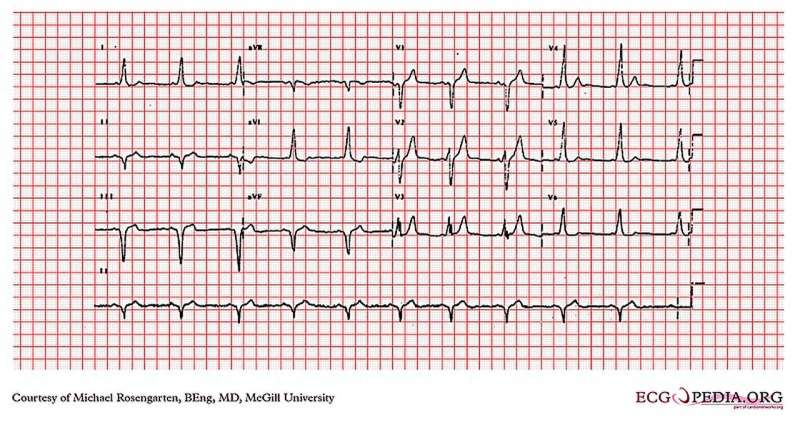This article has been reviewed according to Science X's editorial process and policies. Editors have highlighted the following attributes while ensuring the content's credibility:
fact-checked
peer-reviewed publication
trusted source
proofread
Innovative AI tool detects hidden heart disorders from ECG photos

A new deep learning application provides an automated screening method for left ventricular (LV) systolic dysfunction. The condition substantially reduces the pumping capacity of the heart and is associated with frequent hospitalizations and a twofold risk of premature death. LV dysfunction is preventable with timely detection and initiation of medications. However, identifying the disease before symptom onset has not been feasible.
To address this challenge, Rohan Khera, MD, MS, and his team from the Cardiovascular Data Science Lab (CarDS) Lab, developed a new artificial intelligence (AI)-based electrocardiogram (ECG) interpretation designed for global use. The study was published July 25 in the journal Circulation.
A cardiologist cannot identify patients with LV dysfunction without an echocardiogram or MRI scan. Diagnosing LV systolic dysfunction—a weakness in the major chamber of the heart—requires cardiac imaging. Broad screening for the disorder is limited by technology and available expertise. However, ECG is the most accessible cardiovascular diagnostic test obtained in clinical practice globally.
In their design, the team included nearly 400,000 ECGs paired with data on heart dysfunction from imaging tests. The algorithm was tested across different formats with data from several U.S. clinics and hospitals, as well as in a large community cohort in Brazil.
"We demonstrate that a simple photo or scanned image of a 12-lead ECG, the most well-recognized and easily obtained cardiac test, can provide key insights on cardiac structure and function disorders," Khera said. "This opens up the possibility to finally bring a screening tool for such disorders that affect up to one in 20 adults globally.
"Their diagnosis is frequently delayed as advanced testing is either unavailable or only reserved for those with symptomatic disease. Now we can identify these patients with a simple web-based or smartphone application," said Khera. A version of such an application accompanies the paper and is hosted by the CarDS Lab for demonstration.
"Our approach creates a super-reader of ECG images—identifying signatures of LV systolic dysfunction, which the human eye cannot accurately decipher," said Veer Sangha, the first author of the study, a member of the CarDS Lab, and a Rhodes Scholar.
"Our AI tool allows early diagnosis and treatment and also identifies those at future risk of developing LV dysfunction," said Khera. "The findings represent our ongoing effort to make application of AI-driven advanced ECG inference accessible."
More information: Veer Sangha et al, Detection of Left Ventricular Systolic Dysfunction From Electrocardiographic Images, Circulation (2023). DOI: 10.1161/CIRCULATIONAHA.122.062646




















